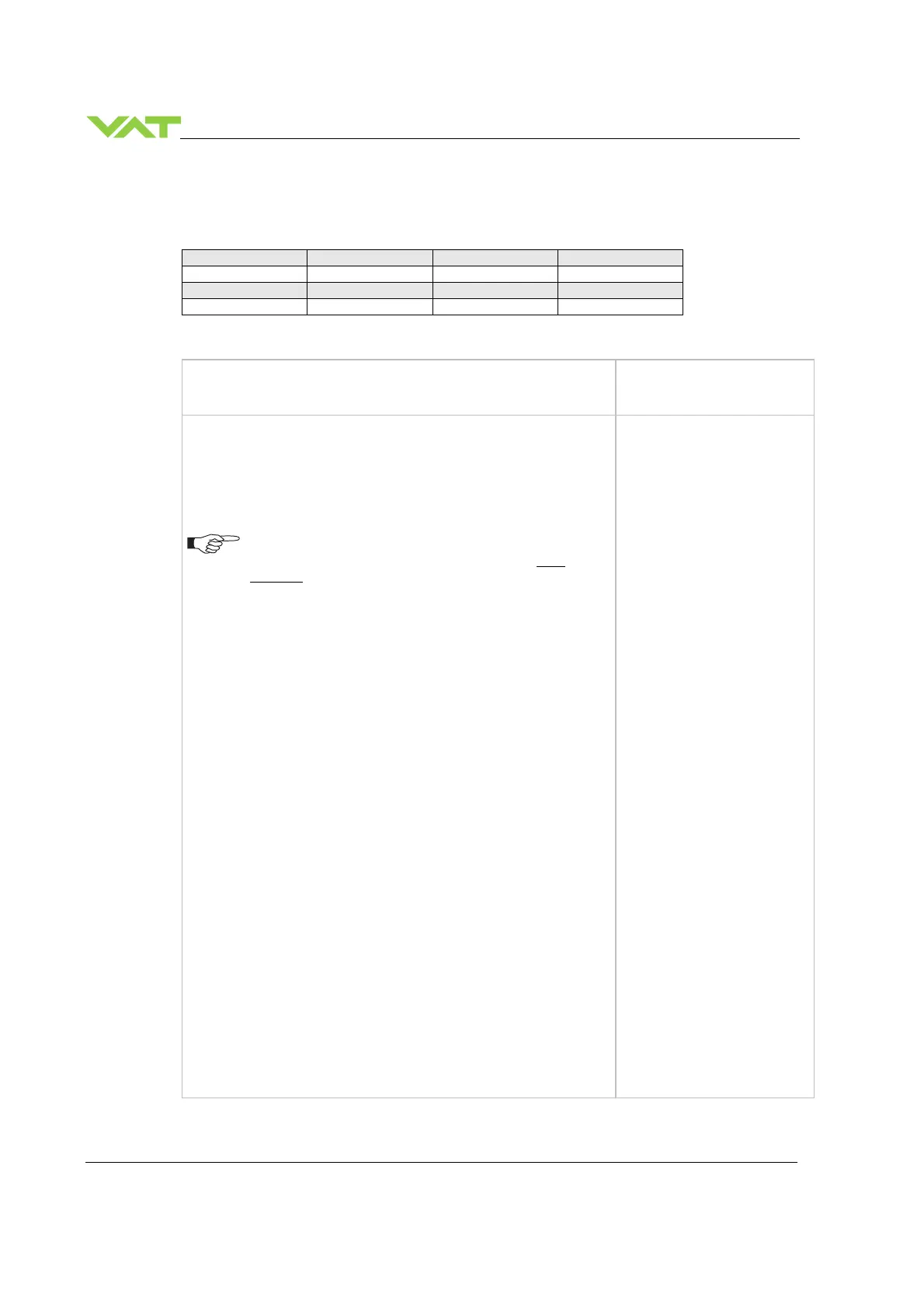INSTALLATION Series
44/116
Edition 2018-08-20 605262EE
4.6.3 LOGIC I/O configuration
Default configuration for LOGIC I/O are:
close valve non inverted enabled
# Function Mode Output
close non inverted enabled
The «LOGIC I/O» Digital input and Digital output can be adjusted.
Local operation:
(‘Control View’, ‘Control Performance Analyzer’ or Hyper terminal)
Remote operation:
Go to ‘Tools / Terminal’ menu and use the following commands.
For Digital input:
to change the configuration: [s:2601][abcdef][CR][LF]
to read the configuration: [i:2601][CR][LF]
It’s not possible to
configuration in remote
operation.
Each element is separated with square brackets for clarity.
Square brackets are not part of command syntax. All
elements are ASCII characters. There are no spaces
between the elements necessary. Command is case
data length 6 characters
a 0 = close valve
1 = open valve
b 0 = non inverted
1 = inverted
c 0 = enabled
1 = disabled
def 000 (reserved)
For Digital output:
to change the configuration: [s:2611][abcdef][CR][LF]
to read the configuration: [i:2611][CR][LF]
data length 6 characters
a 0 = close
1 = open
2 = On
b 0 = non inverted
1 = inverted
c 0 = enabled
1 = disabled
def 000 (reserved)
For LOGIC I/O connector schematics see also chapter «LOGIC I/O».
